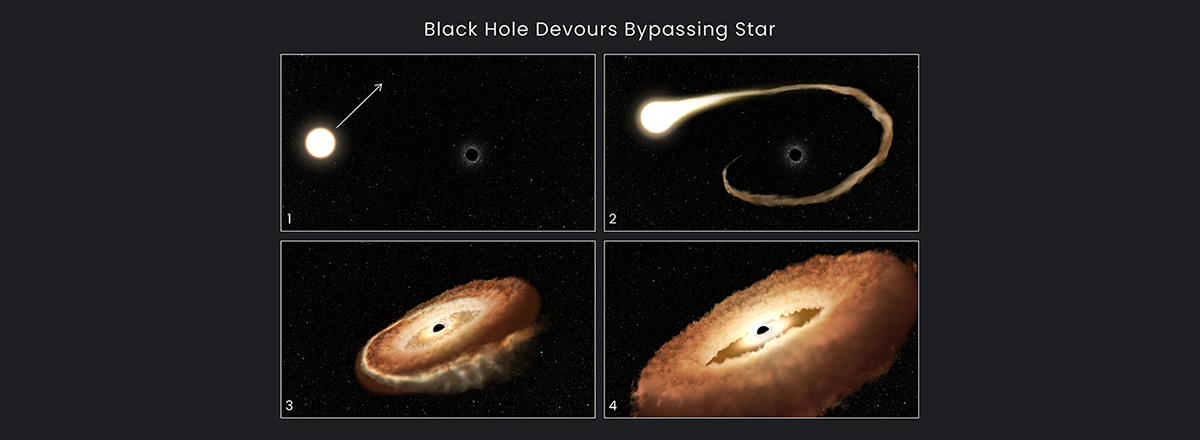Hubble Telescope Finds a Black Hole Twisting a Star into a Doughnut as It Swallows It
Scientists say that a star is only torn apart in this way a few times every 100 thousand years in a galaxy with a supermassive black hole at its core. These stellar killings are called "tidal disruption events."

The Hubble Space Telescope captures the final moments of the life of a star being swallowed by a black hole.
The astronauts discovered a black hole that rips apart a star, stretches it, and shapes its remnants into a stellar doughnut the size of the solar system. The devoured star is located at a distance of almost 300 million light years in the center of the ESO 583-G004 galaxy.
Scientists used several artist's illustrations to explain how a black hole can swallow a bypassing star:
- A star passes near a supermassive black hole in the center of a galaxy.
- The star's outer gases are drawn into the black hole's gravitational field.
- The star is being torn apart by tidal forces.
- The remnants of the star are drawn into a donut-shaped ring around the black hole and fall into the black hole, releasing a huge amount of light and high-energy radiation.
Scientists say that a star is only torn apart in this way a few times every 100 thousand years in a galaxy with a supermassive black hole at its core. These stellar killings are called "tidal disruption events."
Astronomers use the Hubble telescope to find out the details of what happens when a star plunges into the gravitational abyss.

